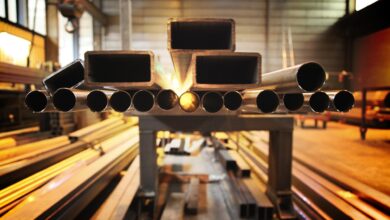Taking Control: The Rationale Behind Starbase’s Own Fire Department

SpaceX continues to redefine the boundaries of innovation, not just in rocketry but also in how a cutting-edge industrial complex operates. At its sprawling Starbase facility in Boca Chica, Texas, the company is taking an increasingly self-reliant approach to its operational infrastructure. This involves everything from unique manufacturing processes to, now, fundamental public services.
The latest development highlights SpaceX’s commitment to complete operational autonomy and robust safety protocols. Facing the unique demands of rocket development and launch operations, the company is actively forging its own path to ensure rapid, specialized emergency response.
Taking Control: The Rationale Behind Starbase’s Own Fire Department
Operating a facility like Starbase presents unparalleled challenges. The presence of highly volatile propellants, massive structures, and complex high-pressure systems necessitates an emergency response capability far beyond typical municipal services. This isn’t just about fighting a brush fire; it’s about specialized industrial fire safety.
SpaceX’s company town has formed a volunteer fire department, extending control over both the emergency response and permitting process as the company looks to expand Starbase. This strategic move allows for an integrated approach to safety, where the fire department is intimately familiar with the facility’s unique layout, hazards, and operational procedures.
Such a bespoke emergency service ensures that any incident, from a small industrial fire to a more complex event involving rocket fuel, can be addressed by a team with specific training and equipment. It minimizes reliance on external agencies that might lack the specialized knowledge required for such a unique environment, streamlining crisis management.
Building a Bespoke Emergency Response System
The concept of a volunteer fire department at Starbase might conjure images of traditional community services, but this initiative is likely far more sophisticated. These volunteers are anticipated to be a mix of SpaceX employees and local residents, all undergoing rigorous training tailored to industrial and rocket-related emergencies.
Imagine firefighters not only trained in standard procedures but also deeply knowledgeable about cryogenic fuels, high-voltage systems, and the structural integrity of a Starship or Super Heavy booster. Their equipment would also be specialized, designed to tackle the unique chemical and physical challenges posed by advanced aerospace operations.
This internal capability provides an unprecedented level of control over safety standards and response times. When every second counts during a critical incident, having an on-site, fully integrated team can make a monumental difference. It’s a proactive measure that aligns with SpaceX’s culture of ambitious, self-driven problem-solving.
Implications for Starbase Expansion and Beyond
The creation of an in-house fire department is a clear signal of SpaceX’s long-term vision for Starbase. As the company continues its rapid expansion, adding more test stands, production facilities, and launch infrastructure, the need for robust, responsive safety services only grows. This initiative removes a potential bottleneck, allowing growth to proceed without external dependencies.
Beyond immediate safety, taking control of the permitting process for emergency response demonstrates a desire for operational efficiency and regulatory agility. It allows SpaceX to align its safety protocols directly with its rapid development cycles, ensuring that new infrastructure can be certified and brought online without undue delay.
This model could also serve as a blueprint for other large-scale industrial projects or remote facilities that require highly specialized emergency services. It showcases a proactive approach to managing risk and maintaining operational continuity in complex, high-stakes environments. It’s an interesting example of private industry taking on roles traditionally handled by public entities.
A Testament to Self-Reliance and Innovation
SpaceX’s decision to form its own volunteer fire department at Starbase is more than just a logistical arrangement; it’s a powerful statement. It underscores the company’s commitment to self-reliance, innovation, and an unwavering focus on safety as it pushes the boundaries of space exploration.
By bringing emergency response and permitting in-house, SpaceX is not only safeguarding its assets and personnel but also accelerating its ambitious goals. This strategic move ensures that Starbase remains a dynamic, safe, and efficient hub for developing the future of spaceflight. It’s a compelling example of how comprehensive control and specialized expertise can propel groundbreaking endeavors forward.





